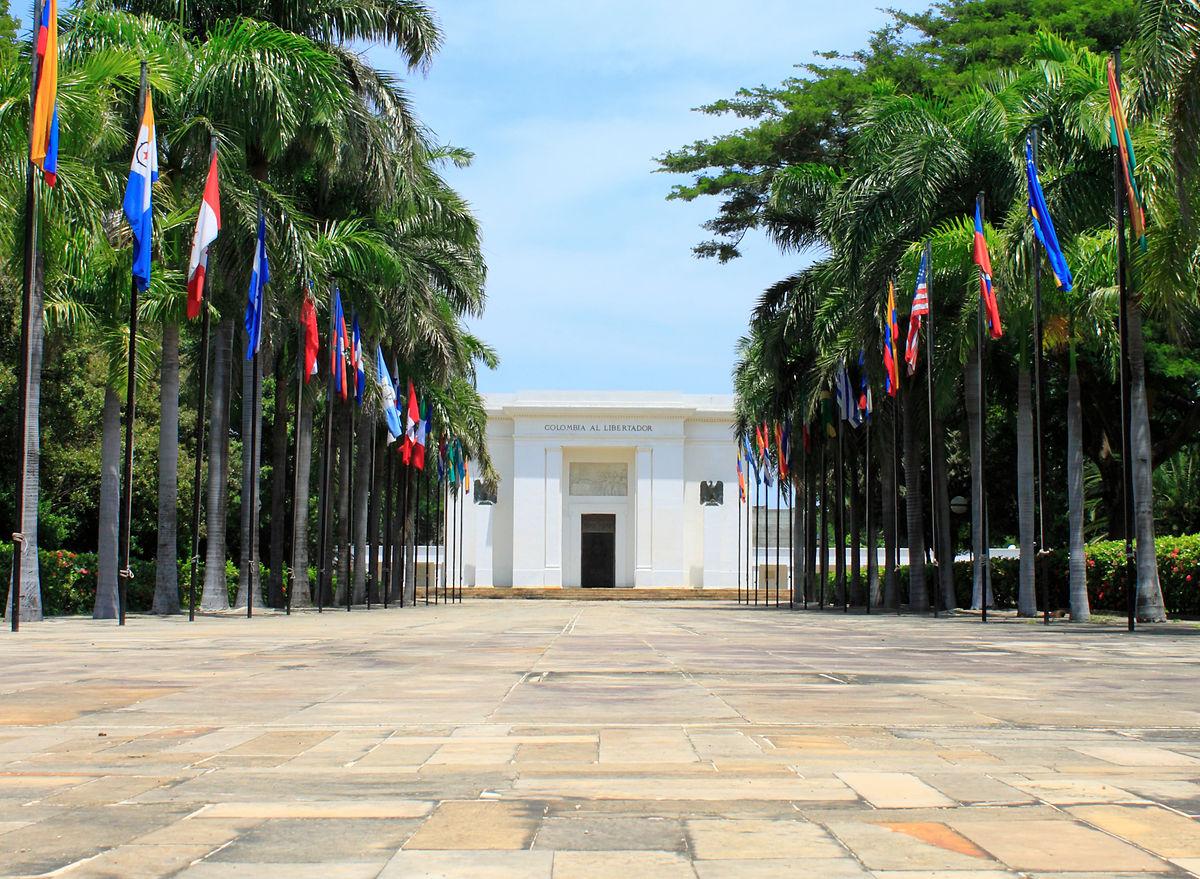2023 JCI CONFERENCE OF AMERICA | SANTA MARTA, COLOMBIA
Welcome to Santa Marta!
Welcome to the city between the Sierra and the sea. A territory privileged by nature, where Garcia Marquez’s texts transcend and become reality with the magical biodiverse landscapes, history, and multiculturalism. With a Lost City in the middle of the mountains, which has the joy of being the heart of the world. Where the Sierra Nevada with the highest snow-capped peaks in the country meets the warm and crystalline waters of the Colombian Caribbean Sea in Tayrona Park.
A place where life is simple and joyful and ancestral traditions of the communities of the Sierra Nevada blend with artisanal fishing in Taganga, green and blue waters and spectacular sunsets.
Download our free
Santa Marta Travel Guide
Visit website
Discover Santa Marta
Practical information
About Santa Marta
Welcome to Santa Marta!
2023 JCI CONFERENCE OF AMERICA | SANTA MARTA, COLOMBIA
Discover a sea of sustainable impact
Santa Marta is pure flavor. The city’s diversity is evident in its landscape, people, and each and every aspect of its culture; it is a destination that truly embraces its visitors and makes them feel at home.
What makes this city unique? Santa Marta’s beautiful terrain is its most distinguishing feature: its unforgettable landscapes in which the green foliage, blue sea, yellow sun and sand, and the contrast between the beaches and the white-peaked Sierra Nevada, make Santa Marta a must-see destination.
There are also about 30,000 people from the KOGI, ARHUACO, KANKUAMO, and WIWA indigenous ethnic groups that live in Santa Marta. In fact, Unesco declared the area a Biosphere Reserve and World Heritage Site in 1979.
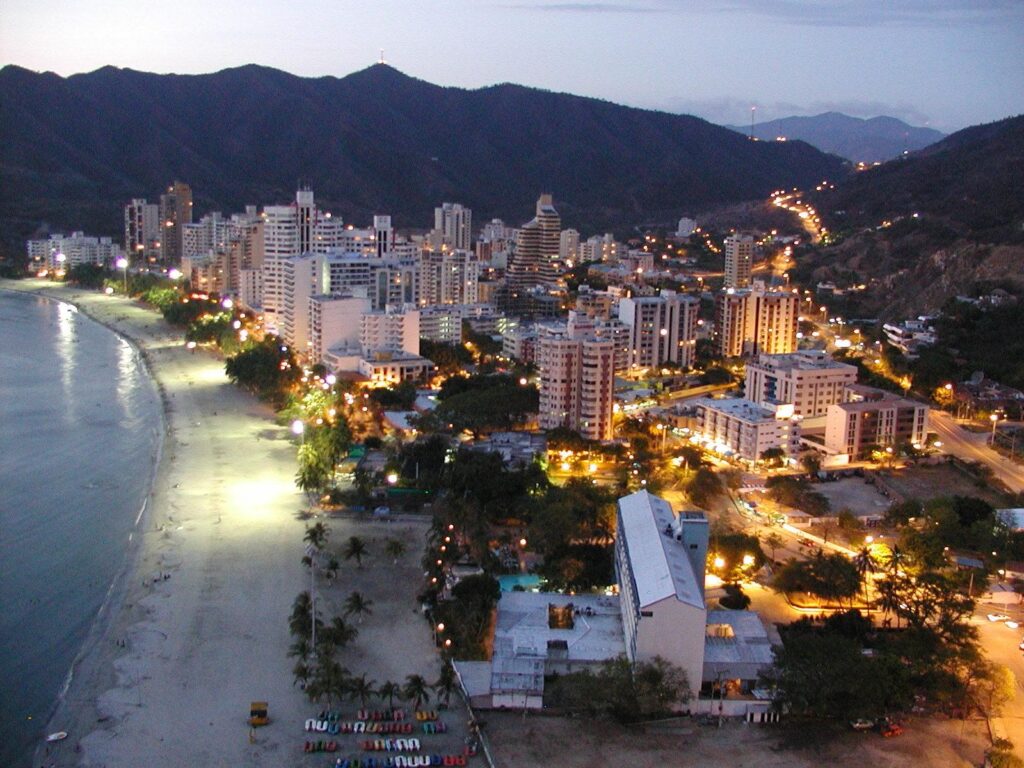
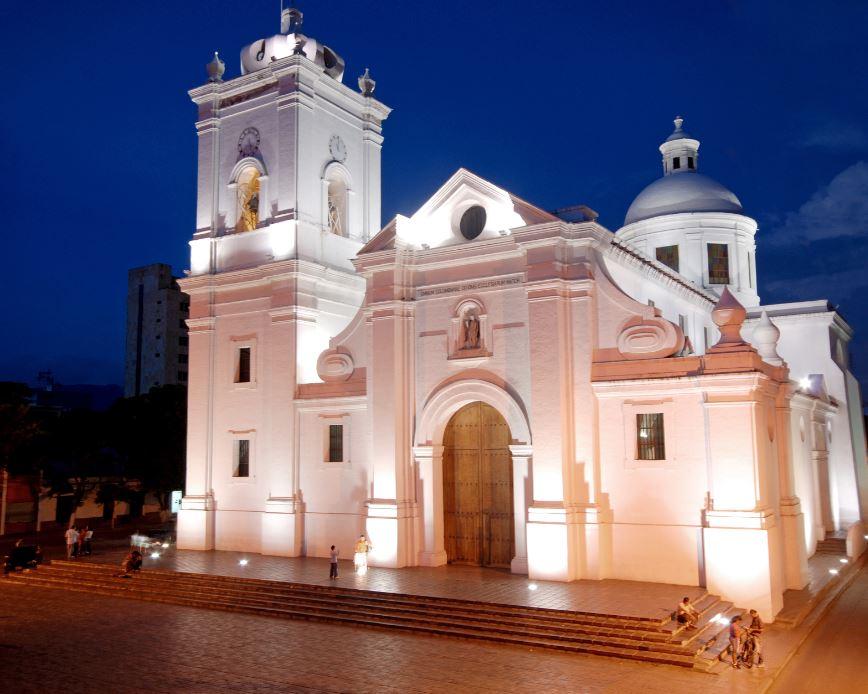
Our historical heritage!
Santa Marta is the oldest remaining city in Colombia, founded in 1525 by Rodrigo de Bastidas, a Spanish conquistador. While the city is a major port for much of Colombia’s Caribbean trade, it also possesses a number of beautiful beaches, including El Rodadero, just 8km to the south, and Taganga, 5km to the north. Santa Marta experienced a huge population boom due to a combination of tourism activity and people displaced by the armed guerrilla conflict, and the city seems to have an aura of new life and new opportunities surrounding it. In addition to being a popular Colombian travel destination, the construction of Santa Marta’s marina, completed in 2011, attracts yachts from around the Caribbean, especially during hurricane season as Santa Marta’s mountains and orientation protect it from storms.
Places to visit in Santa Marta
Main places to visit in our city
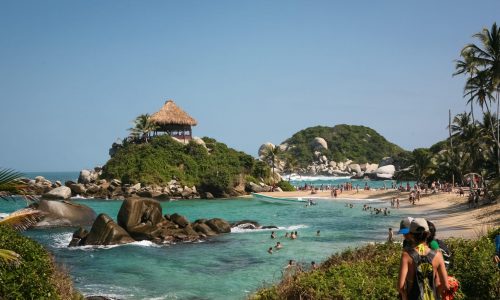
National Park Tayrona
This stunning park, located in the foothills of the Sierra Nevada, rising approximately 5,650 meters above sea level, offers nature lovers a unique experience with outstanding landscapes and unforgettable sunsets, where visitors can immerse themselves in the incredible natural and cultural richness that abounds there.
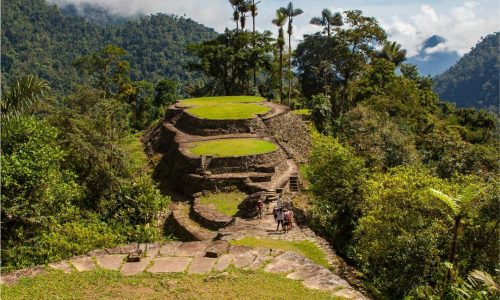
Lost City
Hidden deep in the jungle of the Sierra Nevada de Santa Marta mountains in Colombia sits Ciudad Perdida, the “Lost City.” Built by the Tairona people more than 1,000 years ago, the archaeological site only became an attraction after it was uncovered in the 1970s. Named Teyuna by the Tairona but dubbed Ciudad Perdida upon rediscovery, the ancient wonder is often compared to Machu Picchu as both are archaeological sites perched on hillsides and tucked into South American rainforests.
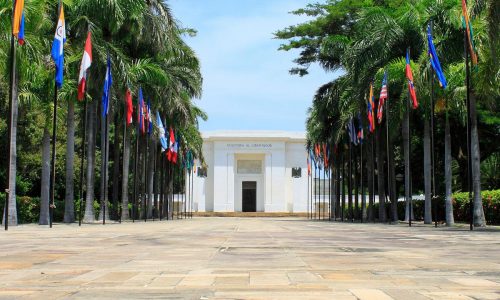
Quinta de San Pedro Alejandrino
This hacienda is where Simón Bolívar spent his last days in 1830 before succumbing to either tuberculosis or arsenic poisoning, depending on whom you believe. The hacienda was owned by a Spanish supporter of Colombia’s independence who invited Bolívar to stay and take a rest before his journey to exile in Europe, but Bolívar died before he could complete the journey.
2023 JCI CONFERENCE OF AMERICA | SANTA MARTA, COLOMBIA
The Answer is Colombia
The Answer is Colombia
2023 JCI CONFERENCE OF AMERICA | SANTA MARTA, COLOMBIA
Practical recommendations
Visas
Los ciudadanos de algunos países necesitan presentar una visa de turista que deben tramitar ante las embajadas o consulados de Colombia en el exterior. En el siguiente enlace podrás verificar si requieres visa o no.
Consulta los países que requieren visa en https://www.cancilleria.gov.co/tramites_servicios/visa/requisitos.
Así mismo, revisa la Resolución 1128 de 2019: https://www.cancilleria.gov.co/sites/default/files/resolucion_1128_de_2018.pdf.
Otro tipo de visas
Recuerda que hay diferentes tipos de visado para quienes no viajan a Colombia por motivos turísticos. Si es tu caso, puedes verificar los requisitos para visado de estudios en https://www.cancilleria.gov.co/tramites_servicios/visa/m-estudiantes.
Si lo que necesitas es un visado de trabajo, consulta https://www.cancilleria.gov.co/tramites_servicios/visa/m-trabajador.
Equipaje
Al ingreso a Colombia, el pasajero puede ingresar dos tipos de equipaje: equipaje acompañado y equipaje no acompañado.
Equipaje acompañado
Se trata del equipaje que ingresa el viajero al momento de su entrada al país. Este puede estar constituido por sus efectos personales y artículos permitidos.
Equipaje no acompañado
Es el que ingresa al país con anterioridad o posterioridad a la llegada del viajero. Este debe venir consignado a su nombre.
Si ya se ingresó o se va a ingresar parte del equipaje por carga, se debe declarar en el formulario de Declaración de Equipaje y Dinero, e informar al funcionario aduanero antes de salir de la zona aduanera. De lo contrario, el envío tendrá el trámite de nacionalización ordinaria. El equipaje que entra treinta días antes o noventa días después de la fecha de la llegada del viajero, debe pagar un 15% de impuesto.
Ingreso de dinero y mercancías
Además de sus efectos personales, cada viajero tiene derecho a ingresar a Colombia dinero y mercancías. Si estos están o no libres de impuestos, depende de las siguientes condiciones:
US$ 10.000 o su equivalente en cualquier moneda. Si la cantidad portada supera esta cifra, es necesario declarar dicho ingreso ante las autoridades aduaneras correspondientes.
Artículos de uso familiar y personal en cantidades no comerciales hasta por US$ 1.500. Estos artículos están libres de impuestos y deben ingresar como equipaje acompañado.
Artículos de uso doméstico, deportivos o propios del arte, profesión u oficio del viajero, en cantidad máxima de 3 de cada tipo, hasta por US$ 2.500. Estos bienes deben pagar un tributo de 15% y el viajero debe cumplir con una permanencia en el exterior mínima de 5 días. Esto puede ingresar como equipaje acompañado o no acompañado.
El ingreso de bienes patrimonio de otros países (bienes culturales, históricos, artísticos o ecológicos, entre otros) debe ser reportado a las autoridades aduaneras. Cabe aclarar que, con relación a los productos ecológicos, hay procedimientos y normatividades particulares, por lo cual no basta el reporte a la autoridad aduanera para su ingreso al país.
Ingreso de moneda extranjera
El viajero que ingrese a Colombia tiene derecho a portar cuantías totales no superiores a US$ 10.000 o su equivalente en otras monedas, inclusive moneda legal colombiana en efectivo, y está obligado por la ley a declarar en el Formulario de Declaración de Equipaje y Dinero.
El viajero puede ingresar al país, siempre y cuando no supere la suma dispuesta por la ley:
Moneda extranjera en efectivo
Moneda extranjera en títulos representativos de la misma
Instrumentos negociables de la moneda extranjera
Visas
Citizens of certain countries need to present a tourist visa to gain entry. These can be processed at the Colombian embassies and consulates abroad. You can check if you need a visa or not in the link below.
Check countries requiring visas at https://www.cancilleria.gov.co/en/procedures_services/visa/requirements.
You can also consult Resolution 1128 of 2019: https://www.cancilleria.gov.co/sites/default/files/resolucion_1128_de_2018.pdf.
Other types of visas
Remember, other types of visas may be required for persons traveling to Colombia for reasons other than tourism. If this is your case, you can check the requirements for study visas at https://www.cancilleria.gov.co/tramites_servicios/visa/m-estudiantes.
If you’re looking for a work visa, go to https://www.cancilleria.gov.co/tramites_servicios/visa/m-trabajador.
Luggage
When entering Colombia, passengers can bring two types of luggage: accompanied luggage and unaccompanied luggage.
Accompanied luggage
This is the luggage that visitors bring with them when entering the country. This can be made up of personal effects and permitted items.
Unaccompanied luggage
This is luggage that enters the country before or after the visitor’s arrival. This type must be labeled with their name.
If part of your luggage has entered or is scheduled to enter by freight, this must be declared on the Luggage and Moneys Declaration, and the customs officer must be informed before leaving the customs area. Otherwise, the delivery will be processed as a standard nationalization. Luggage entering thirty days before or ninety days after the visitor’s date of arrival, must pay a 15% tax.
Bringing in money and goods
In addition to their personal effects, each visitor is entitled to bring money and goods into Colombia. Whether or not these are tax-free will depend on the following conditions:
Maximum of US$ 10,000 or equivalent in any other currency. If the amount is greater than this limit, it must be declared to the corresponding customs authorities.
Items for family or personal use in non-commercial amounts up to US$ 1,500. These items are tax free and must enter the country as accompanied luggage.
Items for domestic, sports, art, professional or work-related use by the traveler, up to a maximum of 3 items of each type, with a value of up to US$ 2,500. These items must pay a 15% tax and the traveler must have been outside the country for a minimum stay of 5 days. These items can enter as accompanied or unaccompanied luggage.
The entry of heritage items from other countries (cultural, historical, artistic or organic goods, among others) must be reported to the customs authorities. Please note that, in relation to organic goods, there are specific procedures and regulations in place and reporting to the customs authorities is not sufficient to ensure their entry into the country.
Bringing in foreign currency
Travelers entering Colombia are entitled to bring total amounts no greater than US$ 10,000 or foreign currency equivalent, including legal Colombian currency in cash, and are required by law to fill out a Luggage and Moneys Declaration Form.
Travelers may bring the following into the country, provided it does not exceed the legal limit:
-
Foreign currency in cash
-
Foreign currency in the form of cashable securities
-
Foreign currency negotiable instruments
RECOMMENDATIONS
- Santa Marta’s weather is warm, with an average temperature of 82.4 °F and a dry climate due to the breezes coming in from the Sierra Nevada.
- The city’s Simón Bolívar International Airport is located 10 minutes from the Rodadero and 15 minutes from the Santa Marta’s historic center. This airport has national and international connections.
- Within the city, you can use taxis and buses to get to any places of interest.
- We strongly recommend that you get vaccinated for yellow fever 15 days prior to visiting any natural areas. We also recommend that you bring medications, painkillers, sunscreen, and insect repellent. It is also very important that, while you are visiting Santa Marta, you drink only bottled water, not tap water.
- The city is a tourist destination that brings together excellent hotel infrastructure with luxury hotels, apartments, and hostels for more adventurous travelers, where you can meet people from around the world, participate in cultural exchanges, and make your vacation truly unforgettable—so make your booking in advance.





